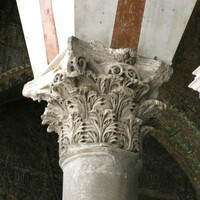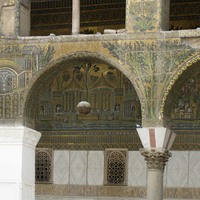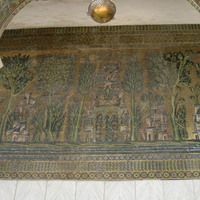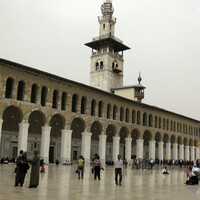Great Mosque of Damascus
Type:
Mosques
Date:
706–15,
minaret opposite mihrab by mid-ninth century
Location or Findspot (Modern-Day Country):
Syria
Description:
Damascus was the capital of the Umayyad Caliphate from 661 to 750. The city's congregational mosque, begun in 706, remains one of the great monuments of Umayyad art and architecture. It was built under the Umayyad caliph al-Walid I (r. 705–15), and its luxury helped to affirm the status of the city. The mosque occupies a location that was once the site of a Roman temple and later a Byzantine church built for the head of John the Baptist. Although the church was razed, John's relics were placed in a prominent shrine within the mosque’s prayer hall, thereby honoring John as the Qur'anic prophet Yahya.
In the prayer hall, two-story colonnades form three long naves running perpendicular to the direction of prayer. The mosque's mosaic decoration was executed by Byzantine artists. Although the idyllic scenes of cities, gardens, and rivers on radiant gold backgrounds recall Byzantine mosaics, representations of people or animals are notably absent.
In the prayer hall, two-story colonnades form three long naves running perpendicular to the direction of prayer. The mosque's mosaic decoration was executed by Byzantine artists. Although the idyllic scenes of cities, gardens, and rivers on radiant gold backgrounds recall Byzantine mosaics, representations of people or animals are notably absent.
Relevant Textbook Chapter(s):
4
Repository and Online Resources:
• The ancient city of Damascus is on UNESCO's World Heritage List.
• Explore a 3-D model of the site.
Image Credits:
Manar al-Athar, Navid Jamali








